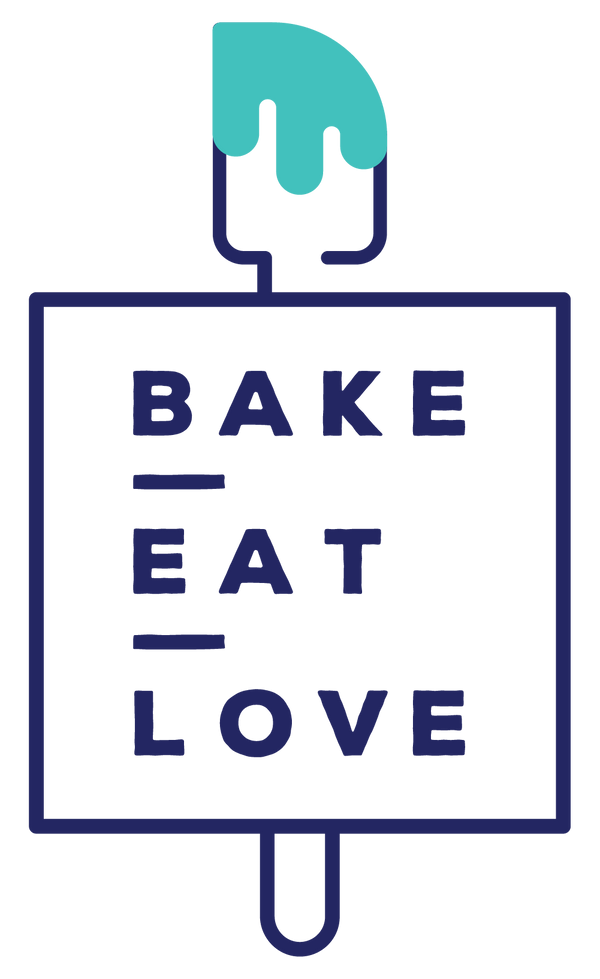Chocolate Orange Mille-Feuille

Portion Measurements
We recommend making 12 Mille-Feuilles as the dessert is deliciously rich, however if you are looking for a larger serving size, we've included several in this chart:
| Number of Portions | Number of Rectangles | How to Cut Portions |
| 12 | 36 |
|
| 6 | 18 |
|
| 3 | 9 |
|
Check out the video tutorial!
FAQs
Questions and answers will be added here. Have a question? Email BEL@bakeeatlovebox.com
1.) I only have two baking sheets, what can I use instead to weigh down my pastry dough while it bakes?
Answer: For best results we do recommend using a baking sheet to weigh down the pastry during the first ten minutes of baking. However, you can use a 9 x 13-inch metal baking pan as a substitute. Glass 9 x 13 casserole dishes are too heavy, but the metal baking pans work great! The 9 x 13 baking pans are smaller than the dimensions of the baking sheet so you will want to make sure that all of the pastry rectangles fit under the 9 x 13-inch pan when it is placed on top of them.
2.) Can I make components of this recipe in advance?
Answer: Yes! The pastry sheets and pastry cream can be made up to 3 days in advance. Store the pastry cream in the refrigerator and the pastry sheets in an airtight container at room temperature. Make the icing just before assembling the treats.
3.) How do I prevent my dough from sticking to my work surface when I am rolling it out?
Answer: To help prevent your dough from sticking move it around while rolling it out and dust the work surface under the dough with a little flour after lifting it up each time.
4.) In step 9 the directions say to add some of the hot milk mixture to the egg yolks to temper them. What is tempering?
Answer: If eggs or egg yolks are added directly to a hot mixture, you risk scrambling the eggs. Tempering is the process in which a portion of warmer liquid is slowly added to eggs or egg yolks and mixed. With this method, the eggs gradually heat up so that your final mixture becomes silky, thick, and homogeneous.
5.) What is the best way to zest an orange?
Answer: When zesting citrus collect the outside peel and not the pith. The pith is the white material between the peel and the flesh. It has a bitter flavor. Put the zester in your dominant hand and the orange in the other. From the top to the bottom of the orange, drag the orange over the zester mini blades in a downward motion. Rotate the orange and repeat until the peel is removed. If using a cheese grater, place the grater on a small plate. Find the finest holes on the grater. Hold the top of the grater with your non-dominate hand and with your other hand hold the orange vertically and drag it carefully down one side of the orange, tilting it slightly to the curve of the fruit. Turn the orange and repeat until all of the peel is removed.
6.) Why do we poke holes in the pastry dough with a fork before baking?
Answer: Poking holes in the dough with a fork is a method called docking. Docking allows steam to escape while the pastry is baking and helps prevent it from puffing up.
7.) What do I do if I accidentally break one of my pastry rectangles?
Answer: Don't worry! If you break one of your pastry rectangles you can hide any broken ones in the center of your mille-feuille layers. The pastry cream will help seal in any cracks and stabilize the pastry.
8.) My pastry cream seems a little thick, is that correct?
Answer: Yes, you want your pastry cream consistency to be a little thicker than pudding, that way it doesn't run off the side of the pastry when you are making your layers.


9.) Do you have a step-by-step visual assembly of the mille-feuille?
Answer: Yes, below is the step-by-step process for assembling the mille-feuille!
1.) Make your pastry stacks!

2.) After filling your piping bag with pastry cream. Unstack your pastry and pipe a squiggly of pastry cream onto the bottom layer of each mille-feuille.


3.) Place the second layer of pastry on top of the bottom layer. Then pipe a squiggly of pastry on the second layer of pastry.

4.) Spread your icing on the top pastry.


5.) You don't want your icing to set up too much on your pastry. Creating the design is easier when the icing is a bit more fluid. After melting your chocolate and adding it to your pastry bag. Snip a little off the end of the pastry bag and pipe 3 evenly spaced lines across your pastry. If your pastry is a bit wider and allows for a 4th row, go for it!

6.) Create the mille-feuille design! Place the tip of the toothpick at the bottom edge of an iced pastry top. Drag upwards, creating 4 lines, leaving a space between. In each space drag the toothpick downwards. Repeat motion evenly across the pastry. Wipe off the toothpick tip before continuing the design on the rest of the mille-feuille.



Best Practices
- Before pre-heating oven make sure that oven racks are adjusted to the center.
- After piping the pastry cream on the first layer of the mille-feuille, place the second layer of pastry on top and gently situate it in place with a back-and-forth motion, rather than pressing down. The pastry rectangles can break if they are pushed down too hard.
